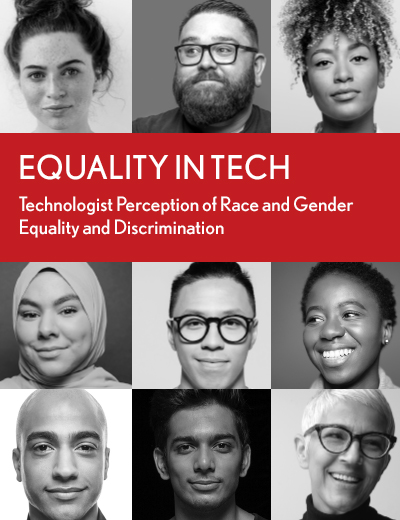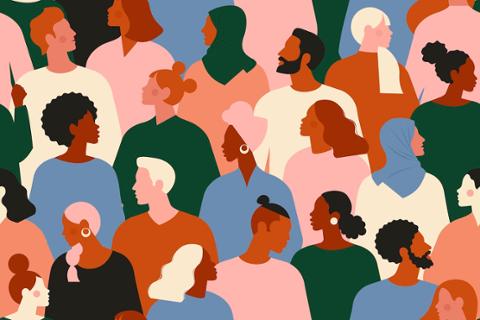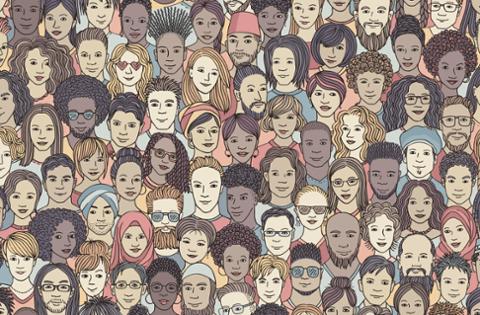When it comes to equality in tech, there’s still a long way to go, particularly when it comes to addressing issues of compensation and pay equality for Black, Indigenous, and People of Color (POC).
Dice’s new Equality in Tech Report uncovered a significant “perception gap” when it comes to race and compensation, with Black, Asian Indian, Asian/Pacific Islander, and Hispanic/Latino(a) technologists more likely than White technologists to feel that they’re underpaid relative to other people in the same occupation and skill level.
Although 60 percent of White technologist respondents reported being satisfied with their salary, only 50 percent of Black technologists could say the same. Those numbers drop even more for other groups, including Hispanic/Latino(a) technologists (49 percent), Asian/Pacific Islander technologists (49 percent), and Asian Indian technologists (45 percent).
White technologists, meanwhile, reported being “very satisfied” more than members of any other group.
Yolanda Chase, chief diversity officer for the Washington Technology Industry Association, explained her office was established to create solutions and provide the leadership, resources and tools tech organizations can leverage to address inequality.
“If they are to get better at attracting, retaining, and promoting Black, Indigenous, and People of Color, it’s important they’re equipped with the resources to do that, from compensation to benefits to how they’re integrating people of color before they even come in the door,” she said.
That means building a toolkit for a variety of actions that can be taken, including guides, tutorials, statistical information, and ways organizations can use vendor partners for auditing their systems, succession planning, and to thwart unconscious bias.
“A variety of approaches can be taken, which can also prevent further inequities as they move through implementing new programs,” she said. “There’s no one specific thing that is happening, so it makes it complicated to get to the root of it with every single organization.”
Compensation Equality
When it comes to compensation, Chase would like to see more coaching for People of Color who are on the job hunt, including how they might highlight job skills and attributes that qualify them for the right pay.
“There’s a little bit of fear when there’s competition, and marginalized groups lack self-confidence,” she explained. “That’s why it’s important to do the research on what the median pay range for where you’re going to be working—it helps when you can reach to facts to back up your requests.”
Educative CEO Fahim ul Haq said the pay gap exists because many people who come from underprivileged backgrounds don’t have the information, networking or mentorship opportunities at a very early level, and some candidates look better simply because they’re better-prepared.
“At the very basic level, People of Color don’t get a lot of jobs in the first place, and that also speaks to the disparity in the pay, because when you’re in an interview, someone who knows what the company is looking for, and speaks the language they’re looking for, that person would be ranked higher, so their salary would be higher from the get-go,” he said.
While ul Haq said he would like to see more concentrated efforts from the C-suite down to tackle pay disparities, it’s also up to job candidates to seize opportunities during the job-hunt and interview process.
“Be prepared, be informed, and understand the standard dynamics of how negotiations work. Align your job search in a way where you have multiple offers on the table, and then negotiate,” he said. “This is hard for everyone—it was hard for me, and every time this comes up, it’s not a walk in the park. It’s emotionally draining or most human beings—haggling is not something most people enjoy doing.”
He said it’s critical to remain polite and respectful when negotiating compensation, but also to be firm and clear in explaining that what has been offered is lower than industry standards.
“In many cases, you just have to ask,” ul Haq said. “Personally, I’ve just asked, ‘Is there room for negotiation?’ They say, ‘Yes, we can talk about that,’ and it opens up that avenue. If the hiring manager is showing there is some wiggle room there, chip away at that, and explain what you want—just talk about it.”

Equality in Tech Report
Access now. No contact information and form submission required for access.
Mentorship and Visibility
Mentorship and visibility are two additional components that need to be more broadly implemented if the race-based compensation gap is to be rectified.
“A lot of people miss out on promotional opportunities because they don’t have the chance to align themselves with the company’s broader goals,” ul Haq said. “As they’re hiring People of Color, organizations have to be very deliberate. If those employees are not growing that fast, then it is leadership’s responsibility with the right mentorship and alignment so they can grow as fast as their other peers.”
Whether you’re talking about a tech giant or a midsize organization, providing mentorship to every individual is key to making sure they all have the information necessary for success. “A lot of the inequality today comes from the fact that people of color in our universities and schools, they see successful people around, and they don’t look like we do, and racism discourages you,” ul Haq added. “When you see a successful CEO who’s a Person of Color, that’s really inspiring, because you can really see yourself become that person.”
For Kahlil Brewington, director of experience design at Clockwork, it’s been a long, upward journey to equal compensation. The key is to believe in your capabilities.
“When it comes to the industry, one thing Black designers—all minorities or ethnic groups, really—need to remember is they have the same skill sets as their White counterparts,” he said. “They learned the same stuff, and so when you’re in that interview, don’t sell yourself short.”
In the current hiring environment, many organizations are looking for someone different, and it’s important to remember what you bring to the table. “If there’s five White guys around the table, you’re going to be the standout in that group—it’s never a bad thing to be the different person,” he said. “Different is a good thing. You want a diverse mixture in a company, because that’s where you get the best results.”
Brewington said he wants to see a stronger network out there for Black, Indigenous, and People of Color in tech. Personally, he’s reached out directly to those who inspire him through social media platforms such as Twitter, message boards on career sites, and the Slack channel “Where are the black designers?”
“Social media has changed that a lot of Black designers, simply having the ability to reach out to professionals that you like,” he said. “I’ve found that’s a really cool, organic way to reach out and talk about things like how to navigate the industry.”
Like Chase and ul Haq, Brewington said tech leaders need to start moving up Black technologists—and Black women in particular—into visible and prominent leadership roles.
“That will help across the board with equity, with equal pay, and with understanding,” he said. “On equal pay, we have to be more transparent, we have to be a little more human about things and start compensating people correctly. If we start to look at those disparities, we’ll start to see that paying people equitably makes sense.”

Equality in Tech Report
Access now. No contact information and form submission required for access.



